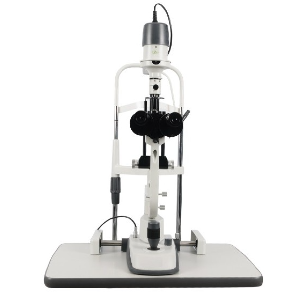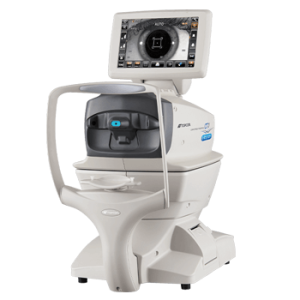Uveitis
![]()
The uvea is a layer of the eye wall that holds a majority of the eye’s blood vessels. It is found between the sclera, the eye’s white outer coat, and the retina, and is further made up of the iris, ciliary body and choroid.
Uveitis is a range or combination of inflammatory diseases that cause swelling of the uveal tissues. It can extend its effects to the lens, retina, optic nerve, and vitreous humor leading to reduced vision or blindness.
Symptoms
The signs, symptoms and characteristics of uveitis may include:
Eye redness

Eye pain

Light sensitivity

Blurred vision

Floating spots

Decreased vision

Diagnosis
An ophthalmologist will examine your eye and take a complete health history. Additional test may be recommended if they suspect an underlying condition which is causing uveitis.

Slit-lamp exam
A slit lamp exam is a routine procedure where a doctor shines a light into the eye to look for injuries or diseases.
Read More
Ophthalmoscopy
Ophthalmoscopy also called fundoscopy is a test to examine the fundus (inside back surface of the eye), evaluate the macula and optic nerve for diseases that could be contributing to the vision loss.
Read More
Complete eye exam
This allows the doctor to have a better view inside your eyes and asses your vision and the response of your pupils to light to check for any abnormalities.
Treatments
If uveitis is caused because of an underlying condition, treatment is focused on that specific correlated condition. The treatment for Uveitis is to reduce the inflammation in the eye, as well as in other parts of the body, if present. The following are possible options to treat it.

Medical management
Some forms of uveitis take a long time to go away. Some come back after treatment. Depending on the disease type, treatments include Antibiotics, antivirals or antifungals, Eye drops, Steroidal anti-inflammatories and Immuno-suppressants.
Procedure
No specific management is required, but the sequelae of this condition may mandate superficial interventions, eg: a cataract developed secondary to this condition may need a procedure.

Clearer Vision is Just a Click Away!
Get yourself cared by the most experienced specialists


